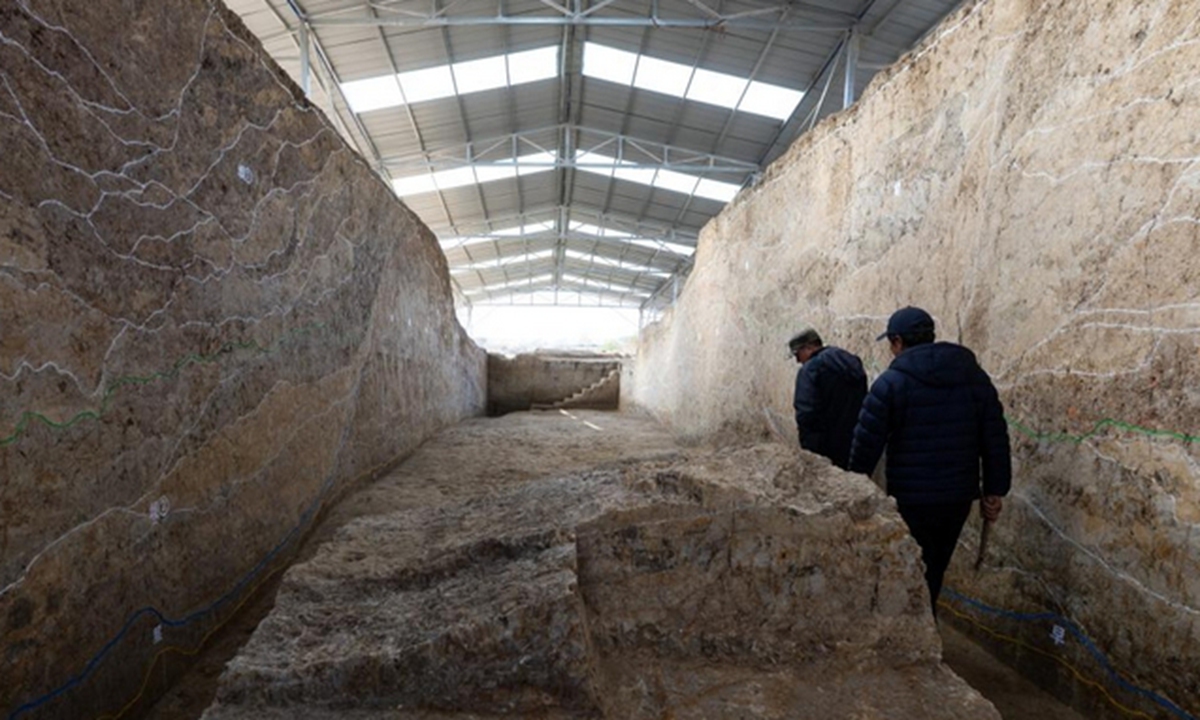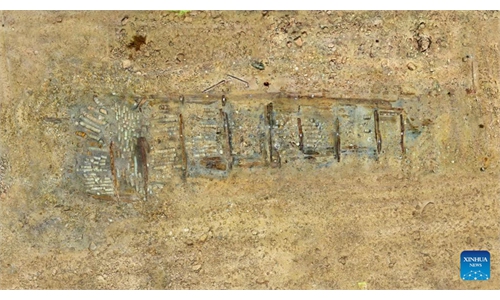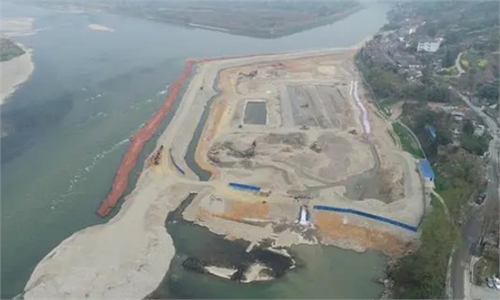ARTS / CULTURE & LEISURE
China's earliest water conservancy facilities unearthed in Hubei Province

Photo: Xinhua
Archaeologists conducting excavations at the Qujialing relics site in Jingmen, Central China's Hubei Province, have found a large-scale system of dams that date back to about 5,100 years ago, making it China's earliest water conservancy project. The discovery of the dams was announced at a meeting of archaeologists on Monday.Other new discoveries were also announced, including a 5,500-year-old settlement from the Youziling Culture along the middle reaches of the Yangtze River. It consists of a water conservancy system, burial area, residential area as well as pottery production area.
The discovery of the dams underscores ancient Chinese people's change from passive flood preventive measures to active water control, Tao Yang, a researcher at the Hubei Provincial Institute of Cultural Relics and Archaeology, told the Global Times on Tuesday.
Tao underlined that some aspects of this shift represent a transition from adapting to nature to actively transform and utilizing it. The archaeological work at the Qujialing site demonstrates the planning concepts, layout evolution and social structure traditions of large central settlements in the middle reaches of the Yangtze River. It reflects a civilization distinct from other regions in the same area, providing a crucial sample for examining the formation and development of prehistoric water control societies and the origin and evolution of civilizations in the middle reaches of the Yangtze River.
The water conservancy project consists of a reservoir, spillway, drought and flood protection systems while irrigation channels are the most utilized.
The existing dam measures 2 meters in height, 13 meters in width and 180 meters in length. A reservoir is to the east of the dam and a gap for a spillway lies at the northern side of the reservoir for the discharge of excess water during flood seasons.
It showcases that ancient people in the area had learned how to harness water based on local terrain rather than simply implementing measures to defend themselves against floods, He Nu, a researcher of the Institute of Archaeology of Chinese Academy of Social Sciences, said.
A large irrigation system next to a western dam also indicates the presence of prehistoric rice paddies in the area. This discovery reveals that there was a water control system along the middle reaches of the Yangtze River, and that it was used more for irrigation. The discovery of this water control system is related to the early cultivation of crops, Luo Yunbing, a deputy dean of Hubei Provincial Institute of Cultural Relics and Archaeology, told the Global Times on Tuesday
He emphasized that agricultural production was a crucial form of support for the transition of agricultural societies at that time, serving as an economic foundation. This also involved the mobilization capacity of social organizations, reflecting an essential capability of early states.
Another finding is that class divisions, or so-called wang, emerged during the Qujialing culture (3,400-2,600BC), professor Zhao Bingfu of Jilin University, said at the meeting.
Liu Bing, a professor of Zhejiang University, agreed with this point, saying that the dam was built to complement the community, and the larger the area covered by the water management system, the larger the social organization in the region.
Additionally, broken pottery from the early and later dam periods as well as high grade buildings were also discovered around the Xiongjialing Dams.
The Qujialing culture is named after the Qujialing relics site, as this is the first place where signs of the culture were found. The culture was a Neolithic civilization centered primarily in the middle Yangtze River region in Hubei and is a prominent site for research into the origin in the middle reaches of the river.




